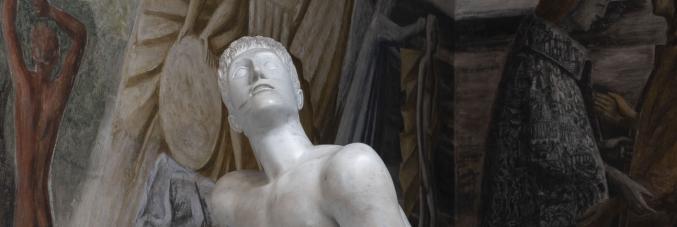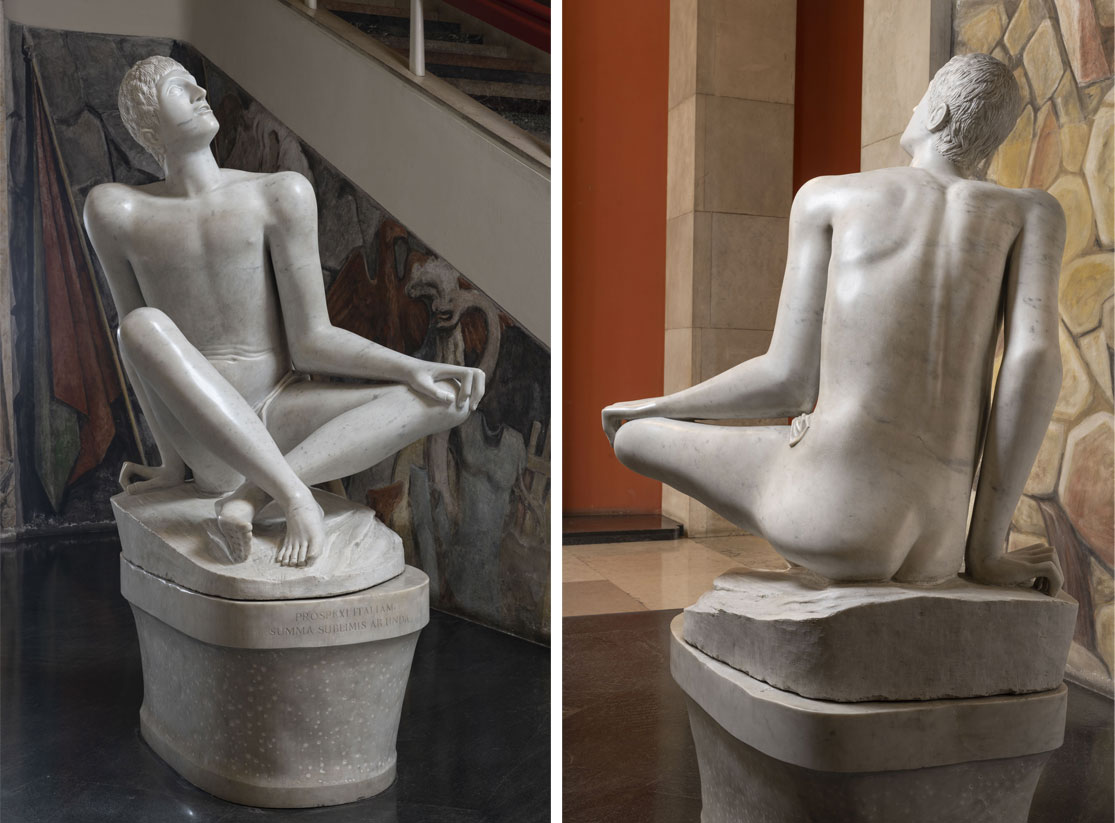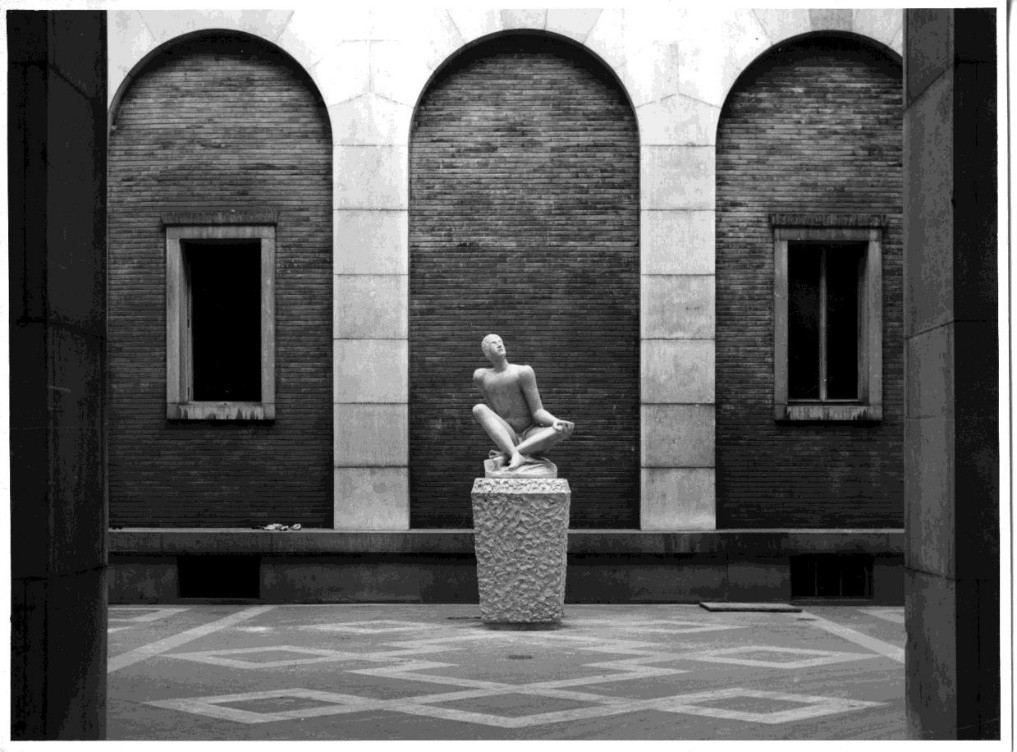
Arturo Martini's Palinuro sculpture shines once more at Palazzo del Bo
04.11.2022
As one of the last works of the great Italian sculptor Arturo Martini (Treviso, 1946 – Milan, 1947) and the first commemorative monument to honour those who died in the resistance movement, Martini’s sculpture, Palinuro it is dedicated to the memory of Primo Visentin, the University of Padua graduate who was killed in an ambush just four days after Italy’s Liberation on April 29, 1945.
In a letter signed by Commander Andrea Cocco and the Chaplain of the Martiri del Grappa brigade (and President of the Committee) Don Giuseppe Menegon, states emblema universale delle aspirazioni umane ad astra, al riscatto e alla veritàas the reason for the donation of the work to the University. Preserved among the 1946 University of Padua rectoral papers, the letter continues to state,
"This marble of Masaccio (moniker for Primo Visentin) exalts the heroisms of the Brigades and the land made sacred by his blood is bestowed to this University of the Veneto... Never forgetting that this offer is for those who were one day Masters in Knowledge, and next, Masters and Brothers of War. This Committee honours Masaccio with this proposal and finds adequate acceptance.”
Commemorating the young master, the sculptor declares, "through him, are all the partisans", Martini refers to the Virgil’s myth of Palinurus in Aeneid, the helmsman who fell into the sea and found a cruel end waiting for him on the beaches of Italy. For years, the dramatic myth had fascinated Martini, an artist who changed and renewed the language of 20th century sculpture. Martini was involved in important public commissions during the Fascism reign, including some for the University of Padua, such as the majestic Tito Livio found in the atrium of Palazzo Liviano. After the first conception of the sketch for the sculpture, in which the basic idea was already configured but the subdued and mournful tone of the figure with a lowered head prevailed, Martini opted for its gaze to turn towards the stars, thus giving the work an accentuated positive meaning. The change is summarized by Martini in a conversation recorded by Nando Dunchi stating “a young man who (now) looks up, to a beautiful future.” The sculpture was unveiled and inaugurated in Padua on February 8, 1948.

Today the Palinuro shines once more after its restoration under the supervision of the Superintendence of Archeology, Fine Arts, and Landscape for the metropolitan area of Venice and the Provinces of Belluno, Padua, and Treviso. The restoration was made possible thanks to the support of the Association of Friends of the University of Padua, the supervision of Monica Salvadori (Vice Rector of Historical and Cultural Heritage), the operational management of Chiara Marin, and executed under the restoration expert and art historian, Valentina Piovan.
Leading up to the restoration, Palinuro was in a non-optimal state of conservation. Incoherent deposits had given the sculpture a nonuniformed look with dark and light spots appearing such as to render the piece discoloured, especially along the areas of the abdomen, the folds of the drapery, and limb joints. The natural clarity and lustre of the marble had not been tarnished.
The restoration began with the removal of dirt along porous surfaces and scratch marks, while numerous, but not deep, these areas are now seen with greater clarity. The protective layers were also removed. Previously treated with polymerized linseed oil that had probably been applied in past to maintain the polish and to even out the imperfections. Layers of oil had formed stains and dripping as different absorption rates of the protective treatment depend on the porosity of the marble.




